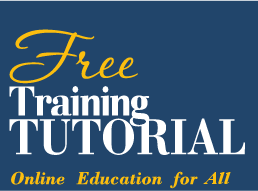The Purpose of Creative Writing: Information
In this lesson, we will talk about the second purpose that an author writes, which is to inform. Informative writing is defined as writing that provides useful or interesting facts or knowledge. There can be several reasons why a writer may want to inform their audience on a particular topic:
- To clear up any mistaken thoughts or ideas.
Example: People believe that racism is a thing of the past, but nothing could be farther from the truth. - Educate about national or global issues.
Example: Poverty has increased globally with over three billion people living on less than $2.50 a day. - To make the topic more familiar and not seem as scary or harmful.
Example: Public speaking can be a fear of some inexperienced people, but learning how to get through it can make the experience easier. - The topic may be something that the author believes that people should know or can be helpful to learn.
Example: Learn how to shop on a budget when you are a college student.
Remember: The author should give the reason why they are writing about the topic and know what kind of a reader they want to reach (also known as the intended audience). Let’s look at why a writer may pick the topics above and what type of a reader may be interested in learning about.
Example: People believe that racism is a thing of the past, but nothing could be farther from the truth.
The writer may use a source, or a person, place, or thing in which information can be obtained (We will learn about citing sources later on). Some sources can come from a reliable source online, a magazine, newspapers, or interviews. These are just some ideas of sources. Here is the same statement with an added piece of information to back up the claim:
“People believe that racism is a thing of the past, but nothing could be farther from the truth. Last October, Black and Asian students at the University of Texas were attacked while off-campus (“Minority Students at University of Texas Targeted“). This is one instance of cruelty fueled by racial hatred.”
As for the intended audience, the writer may have been writing for college students, minorities, or people in general to prove that racism is still alive.
When you are writing to inform, you have to remind yourself these things:
- Is my writing clear enough for the reader?
- Does my writing have enough information as well as the right kind of information for my intended audience?
- Does it grab the reader’s attention?
- How is the grammar and punctuation?
- How is the paragraph structure (a paragraph usually has at least 5 sentences)?
Some practice:
Write examples for each bullet point above. Afterwards, write your intended audience for each one.
Take-Home Writing Assignment:
Take one of the examples you have made and write at least one page on the topic. Use any type of reliable sources that will help inform your readers.
